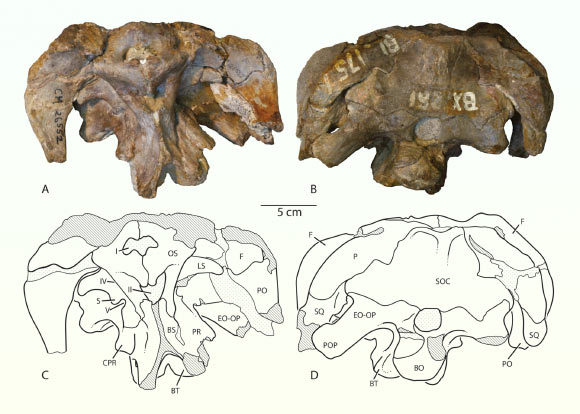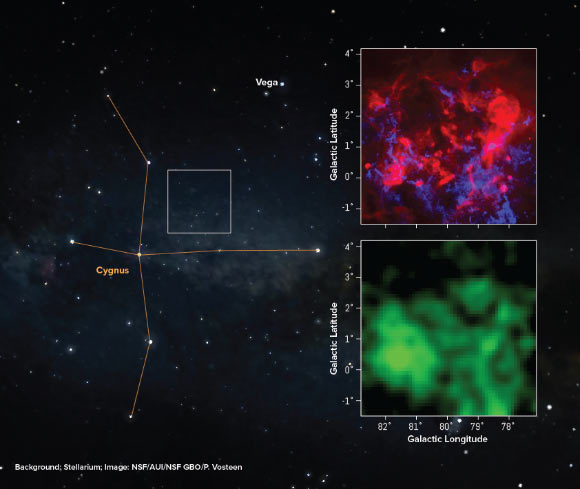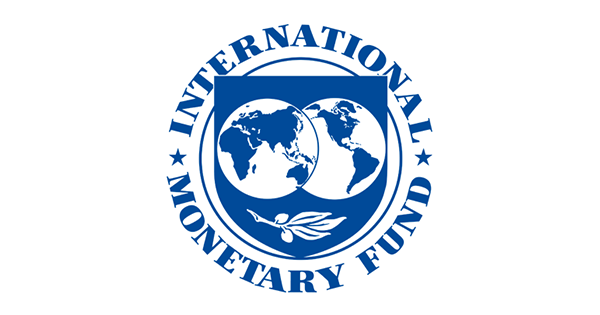A fossil braincase and partial skull roof from Carnegie Museum of Natural History has been reassessed and reclassified, giving rise to a new genus and species of dicraeosaurid sauropod dinosaur: Athenar bermani.
Holotypic braincase of Athenar…

A fossil braincase and partial skull roof from Carnegie Museum of Natural History has been reassessed and reclassified, giving rise to a new genus and species of dicraeosaurid sauropod dinosaur: Athenar bermani.
Holotypic braincase of Athenar…

Arsenal will face London rivals Crystal Palace in the Carabao Cup quarterfinals, while League One side Cardiff City will host Chelsea…

The American Heart Association warns that disrupted circadian rhythms, from irregular sleep, late-night meals, or shift work, can raise the risk of obesity, diabetes, and heart disease, while consistent daily patterns may offer a…

Astronomers using the Green Bank Telescope (GBT) have created the large-scale maps of carbon monoxide (CO)-dark molecular gas for the star-forming complex Cygnus X.
These images show the location of CO-dark molecular gas in Cygnus X. Image…

Samsung brings its popular mobile browser to PC for the first time, unlocking a more fluid and connected experience across the Samsung Galaxy ecosystem
…

Last November, Rode launched its Wireless Micro microphone system that paired two tiny lavalier mics with a small receiver that connected to your phone’s charging port. Rode later gave that product a free upgrade, sending out another receiver…


October 29, 2025
Washington, DC: The Executive Board of the International Monetary Fund (IMF) completed today the third review of the EFF arrangement for Ecuador. Program performance remains strong. All quantitative performance criteria for end-August 2025 were met, some by significant margins. The authorities have made substantial progress on the implementation of structural benchmarks, notably on fiscal, governance, and growth-enhancing reforms.
The Board’s approval of the review enables the authorities to immediately draw an amount of SDR 438.4 million (about US$600 million), bringing total disbursements under the arrangement to SDR2 billion (about US$2.7 billion). Ecuador’s 48-month EFF arrangement was approved by the Executive Board in May 2024 and augmented in July 2025, providing access equivalent to SDR 3.75 billion (about US$5 billion) to support policies aimed at strengthening fiscal and debt sustainability, protecting vulnerable groups, rebuilding liquidity buffers, safeguarding macroeconomic and financial stability, and advancing the structural reform agenda for sustainable, inclusive, and stronger growth benefiting all Ecuadorians. The authorities’ program also catalyzes additional financial support from multilateral partners.
The authorities have taken important actions to strengthen fiscal sustainability and liquidity buffers, while protecting the most vulnerable. These included implementing high-quality revenue and expenditure reforms alongside targeted compensatory measures to protect vulnerable groups. In addition, the authorities are advancing their structural reform agenda to safeguard financial stability, enhance governance, and boost private investment and job-rich growth. The authorities are committed to implementing new structural benchmarks to further advance their reform agenda, which is expected to realize significant growth dividends over the medium term.
Real GDP is recovering much faster than projected at the second review, driven by strong domestic demand and record nonoil exports, alongside low inflation. The current account balance is projected to continue to record sizable surpluses, supporting a further increase in international reserves. The financial sector remains broadly stable, and credit growth is supporting economic activity.
The economy has shown resilience but is still subject to several challenges, including acute global policy uncertainty and volatility in international financial markets. The authorities’ decisive policy actions and steadfast commitment to their economic program helps mitigate risks. Effective implementation of the authorities’ plan of fiscal consolidation and economic reforms, supported by the EFF arrangement, is projected to maintain public debt on a firm downward trend, supporting the authorities’ objective of further lowering sovereign spreads and regaining access to capital markets.
Following the Executive Board’s discussion today, Mr. Nigel Clarke, Deputy Managing Director and Acting Chair, issued the following statement:
“The Ecuadorian authorities have made significant progress in implementing their economic program supported by the IMF’s Extended Fund Facility (EFF) arrangement. All quantitative targets for the third EFF review have been met—many with significant margins—and the implementation of structural reforms is progressing well. Real GDP is recovering much faster than projected, driven by strong domestic demand and record nonoil exports, while inflation remains low. Sizable current account surpluses are projected to continue alongside a further increase in international reserves. The financial sector remains broadly stable, and credit growth is supporting economic activity. Solidifying these achievements will require continued program ownership and steadfast implementation of the authorities’ reform program. Contingency planning is also paramount given domestic and external vulnerabilities.
“The authorities continue taking important policy actions to implement high-quality revenue and expenditure reforms, strengthen fiscal sustainability, and further build fiscal and external buffers. The steadfast implementation of the policy agenda has contributed to a substantial decline in sovereign debt spreads since their peak in April. The authorities remain committed to continue strengthening the fiscal position and maintaining public debt on a firm downward path.
“Enhancements to the social safety net continue through targeted compensatory measures to mitigate the impact of reforms on vulnerable populations. Additionally, the authorities continue expanding the coverage of the social safety net for lower-income households, surpassing program targets.
“The implementation of the financial sector policy agenda includes strengthening financial regulation and oversight, as well as enhancing coordination between supervisory agencies. Efforts are also underway to enhance the resolution framework, gradually liberalize the interest rate system, and develop the domestic capital markets.
“The authorities are advancing structural reforms aimed at unlocking growth potential. They are working to attract private investment in high-potential sectors, such as mining, hydrocarbons, and energy. They are also pursuing new measures to diversify the economy, build resilience to natural disasters, fight illicit activities, and enhance the institutional framework and governance.”
|
Table 1. Ecuador: Selected Economic Indicators |
||||||||||||
|
|
|
|
|
|
Projections |
|||||||
|
|
|
|
2024 |
|
2025 |
|
2026 |
|
||||
|
|
|
|
|
|
|
|
|
|
||||
|
Output |
|
|
|
|
|
|
|
|
||||
|
Real GDP growth (%) |
|
|
-2.0 |
|
3.2 |
|
2.0 |
|
||||
|
|
|
|
|
|
|
|
|
|
||||
|
Prices |
|
|
|
|
|
|
|
|
||||
|
Inflation, average (%) |
|
|
1.5 |
|
1.1 |
|
2.8 |
|
||||
|
Inflation, end of period (%) |
|
|
0.5 |
|
3.6 |
|
1.7 |
|
||||
|
|
|
|
|
|
|
|
|
|
||||
|
Public sector |
|
|
|
|
|
|
|
|
||||
|
Revenue (% GDP) |
|
|
36.8 |
|
36.4 |
|
36.7 |
|
||||
|
Expenditure (% GDP) |
|
|
38.1 |
|
37.6 |
|
36.7 |
|
||||
|
Overall fiscal balance (% GDP) |
|
|
-1.3 |
|
-1.2 |
|
0.0 |
|
||||
|
Primary balance (% GDP) |
|
|
-0.2 |
|
-0.1 |
|
1.2 |
|
||||
|
Non-oil primary balance (incl. fuel subsidies) (% GDP) |
|
|
-5.4 |
|
-4.1 |
|
-2.5 |
|
||||
|
Public sector debt (% GDP) |
|
|
53.8 |
|
53.0 |
|
51.9 |
|
||||
|
|
|
|
|
|
|
|
|
|
||||
|
Money and credit |
|
|
|
|
|
|
|
|
||||
|
Broad money (% change) 1/ |
|
|
4.8 |
|
4.7 |
|
3.2 |
|
||||
|
Credit to the private sector (% change) |
|
|
6.2 |
|
8.4 |
|
3.0 |
|
||||
|
|
|
|
|
|
|
|
|
|
||||
|
Balance of payments |
|
|
|
|
|
|
|
|
||||
|
Current account (% GDP) |
|
|
5.7 |
|
5.1 |
|
4.0 |
|
||||
|
Foreign direct investment, net (% GDP) |
|
|
0.3 |
|
0.6 |
|
0.9 |
|
||||
|
Gross international reserves (US$ billion) |
|
|
6.9 |
|
10.4 |
|
13.1 |
|
||||
|
External debt (% GDP) |
|
|
47.5 |
|
50.7 |
|
50.4 |
|
||||
|
|
|
|
|
|
|
|
|
|||||
|
Sources: Central Bank of Ecuador, Ministry of Economy and Finance, National Statistical Institute (INEC), and IMF staff calculations. |
|
|
||||||||||
|
1/ M2. |
|
|
|
|
|
|
|
|||||
PRESS OFFICER: Fernando Puchol
Phone: +1 202 623-7100Email: MEDIA@IMF.org